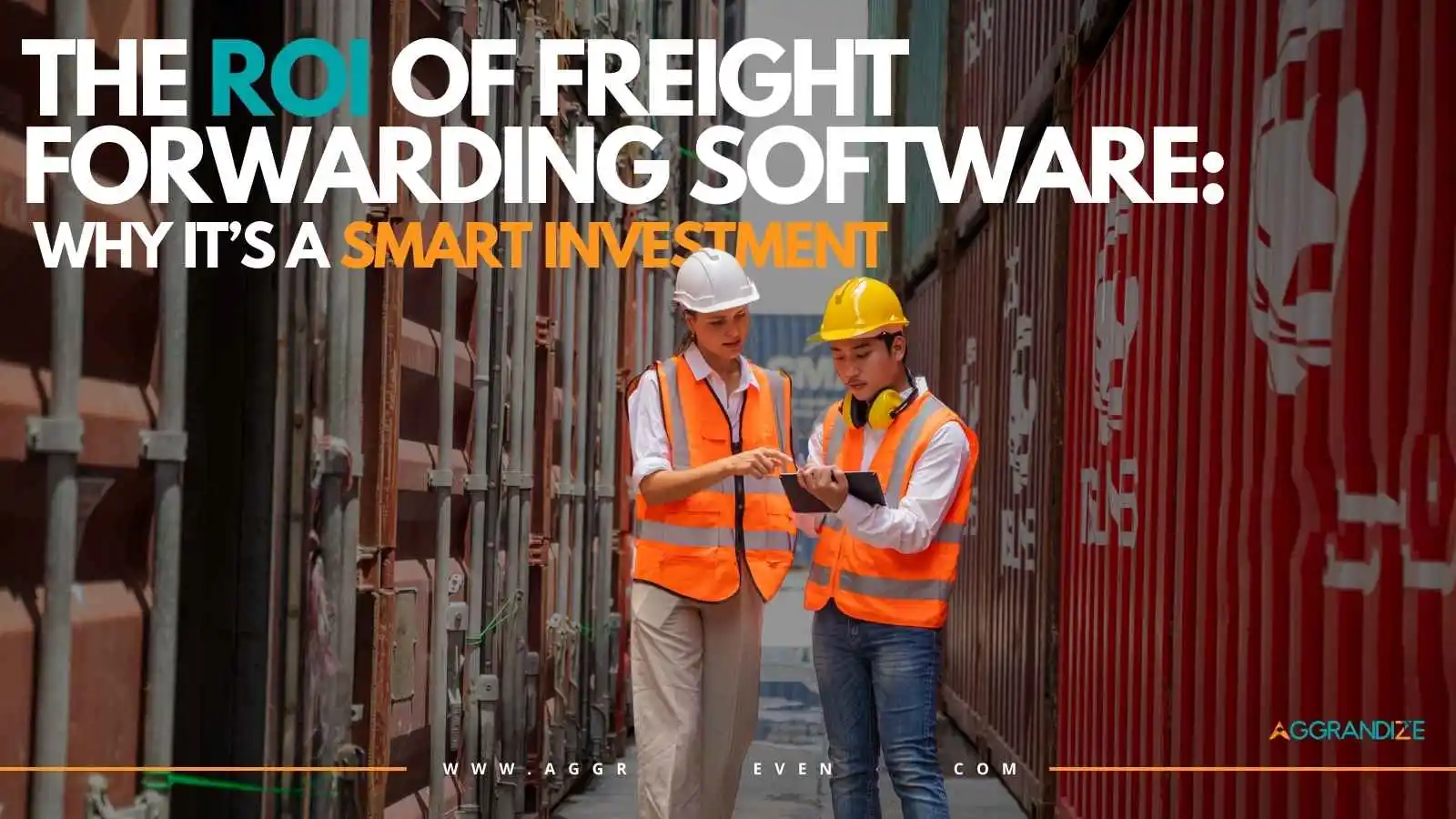Freight Forwarding
The ROI of Freight Forwarding Software
Date: 28-12-2024
In the rush of business activities around the globe today, logistics companies have a hard time to move goods quicker, cheaper, and more effectively. In the heart of this reform is the freight forwarding software-a software program that reduces costs, makes operations simpler and improves decision-making. But how do you justify its cost? The answer is ROI (Return on Investment). In this article, we take a look into the reasons which make freight forwarding software an outstanding tool for logistics companies and how it guarantees a considerable return on investment.
Key Features of Freight Forwarding Software
Freight forwarding software is an all-encompassing tool designed to automate and optimize logistics operations. Key features include:
• Shipment Tracking: Provides real-time updates on cargo status.
• Documentation Management: Automates the preparation and sharing of essential documents like bills of lading and customs declarations.
• Freight Rate Management: Simplifies quoting and invoicing processes.
• Analytics and Reporting: SOffers insights into performance metrics and operational trends.
Types of Freight Forwarding Solutions
Freight forwarding solutions come in various forms, catering to businesses of different sizes and needs:
• Standalone Systems: Focused on specific functions like shipment tracking or invoicing.
• Integrated Platforms: Comprehensive solutions that handle end-to-end logistics processes.
• Cloud-Based Software: Offers flexibility and scalability, ideal for businesses aiming to grow.
How It Supports Supply Chain Operations
Freight forwarding software is the main tool for SCM (Supply Chain Management). By gathering the data in one place and automating workflow paths, freight forwarding software enables a seamless liaison between the aircraft, vessels, trains, and trucks.
What is ROI?
ROI measures the profitability of an investment relative to its cost. In the context of freight forwarding software, ROI evaluates how effectively the software translates into financial and operational benefits.
Calculating ROI for Freight Forwarding Software
To calculate ROI, logistics companies must assess:
1. Investment Costs: : This includes software purchase, implementation, and training expenses.
2. Gains Achieved: Savings in operational costs, time efficiencies, and revenue increases.
Formula

Long-Term vs. Short-Term ROI
While the initial cost of freight forwarding software might seem high, the long-term gains—like reduced errors, improved customer satisfaction, and scalability—far outweigh the short-term expense.
Improved Operational Efficiency
• Automation of Manual Processes: Tedious tasks like data entry and document preparation are automated, allowing employees to focus on strategic activities.
• Centralized Data Management: All logistics data is stored and accessed in one place, streamlining workflows and minimizing miscommunication.
Cost Reduction
• Lower Administrative Costs:By reducing manual labor, companies save significantly on overheads.
• Reduced Freight Errors: Automation ensures that errors in documentation, billing, and compliance are minimized, avoiding costly corrections.
Enhanced Customer Satisfaction
• Real-Time Tracking and Updates: Customers can monitor their shipments, improving transparency and trust.
• Faster Issue Resolution: Instant access to relevant data allows for quicker problem-solving.
Better Resource Allocation
Freight forwarding software ensures that resources—whether labor, hardware, or time—are used in the most efficient way possible, thus minimizing the occurrence of waste, which in turn leads to an increase in profitability.
Boost in Productivity
Automation enables teams to handle a larger quantity of cargoes without adding proportionate workloads, and therefore it directly contributes to higher revenues.
Streamlined Billing and Invoicing
Correct invoicing leads to less disputes and faster cash flow, which secures the business's financial stability.
Managing Complex Global Regulations
Global trade is a complex process that involves customs, taxes, and compliance matters. The freight forwarding software will make this easier by automatically checking for compliance and also by generating correct documentation.
Mitigating Risks in Transportation
Risk management tools that are installed along the software can detect and anticipate the problems such as delays or route inefficiencies which can be solved proactively.
Streamlined Operations
Integration removes the need for manual data entry and redundant steps. Automated workflows lead to simpler operations, starting from inventory management and shipment tracking, which causes few errors, and saving time.
Real-Time Insights and Reporting
By gaining access to real-time data across different systems, the manager can make quick and informed decisions. A digital dashboard pulls all company operations together and allows them to adjust their plans on the fly.
Cost Reduction
Automation has reduced labor expense, and it is also optimized inventory and transport facilities, which has in turn led to the reduction of holding and freight costs. These efficiencies substantially lessen complete cost of operations.
Enhanced Collaboration Across Departments
Integration eliminates silos and employees can now share correct, updated information. This better communication boosts coordination between sales, logistics, and customer service.
Key Features to Look For
When you select freight forwarding software, features like real-time tracking, robust analytics, scalability, and user-friendly interfaces should top the list.
Scalability and Customization Options
Your business will expand, and so should your software. Choose solutions that provide modular upgrades and customization.
Ensuring Seamless Integration
Ensure that the software integrates smoothly with existing tools like ERP systems, warehouse management software, and accounting platforms.
User Training for Maximum Utilization
Comprehensive training ensures employees fully utilize the software’s capabilities, maximizing ROI.
Ongoing Technical Support
Continuous support minimizes downtime and ensures the software evolves with your business needs.
Investment in the freight software is not only a technological upgrade but also a strategic decision that should be followed to improve its success, reduce costs, and ensure long-term profitability. Implementation of the right solution and properly utilizing its features in the best way will keep supply chain businesses afloat in this ever-changing environment.